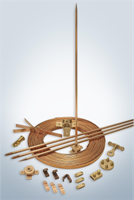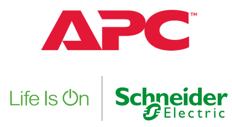A lighting protection system provides a means by which this discharge may enter or leave earth without passing through and damaging non-conducting parts of a structure, such as those made of wood, brick, tile or concrete. A lightning protection system does not prevent lightning from striking – it provides a means for controlling it and preventing damage by providing a low resistance path for the discharge of lightning energy.
The principle components of LPI’s flat tape conventional lightning protection system include:
- Air Termination Network – The primary function of an air terminal or air termination network, is to capture the lightning strike to a preferred point, so as to ensure that the discharge current can be safely directed via the down conductors to the dedicated earthing system.
- Down Conductors – The purpose of a downconductor is to provide a low impedance path from the air termination to the earthing system so that the lightning current can be safely conducted to earth without the development of excessively large voltages. Downconductor routes should be as direct as possible to earth, avoiding sharp bends or turns so as to minimize the risk of sideflashing where impedance / inductance is increased under impulse conditions.
- Earthing System – Each downconductor must have a separate earthing system with provision made for the disconnection of each downconductor from the earthing system for testing purposes. In accordance with International Standards the resistance to earth of the lightning protection system measured at any point, should be less than 10 ohms. It is recommended that all individual lightning earths be bonded together to minimize earth voltage potential rise, in turn all lightning earths should be bonded to surrounding facility earths.
- Bonding to avoid Sideflashing – It is recommended that all metal work including handrails, metal cladding, metal roofs, water pipes, gas pipes, air conditioning units be bonded to the lightning protection system.
Product Highlights
- Compliance to International Standards such as IEC 62305, British Standard BS EN 62305 and Australian / New Zealand Standard AS/NZ 1768-2007.
- Wide range of air terminals, bases, conductors, connectors and fasteners.
- Precision manufacturing allows for easy assembly and installation.
Design Concept
The Rolling Sphere Method exists as the most common design method adopted by lightning protection standards throughout the world. The Rolling Sphere method is based on the electrogeometric model which links the “striking distance” to the peak current delivered by a lightning strike. When designing using the rolling sphere method, an imaginary sphere of typically 45 metres is rolled over the structure to be protected. All points of the structure that make contact with the sphere are nominated as points on the structure that require protection, all unaffected areas of the structure are considered protected.






